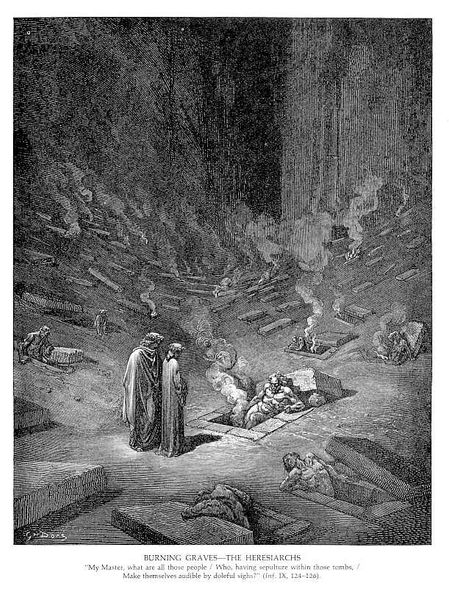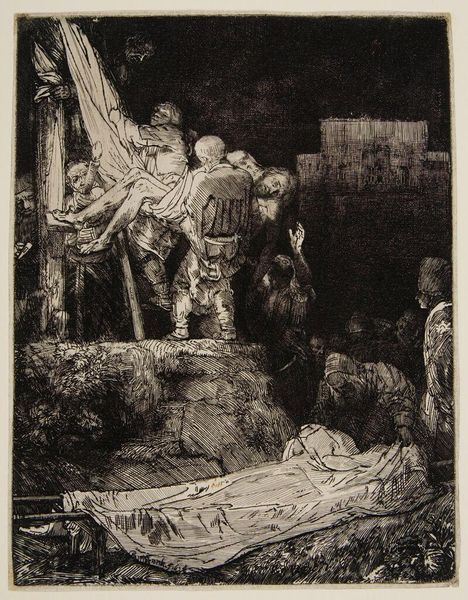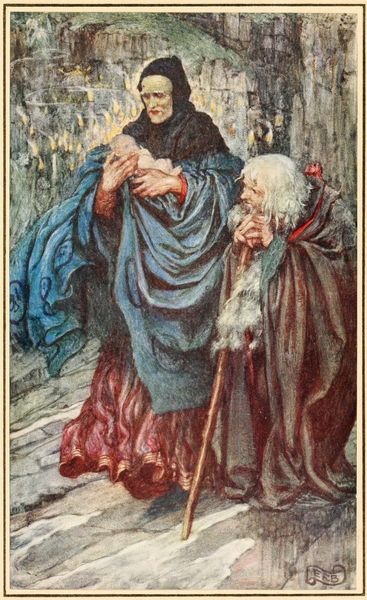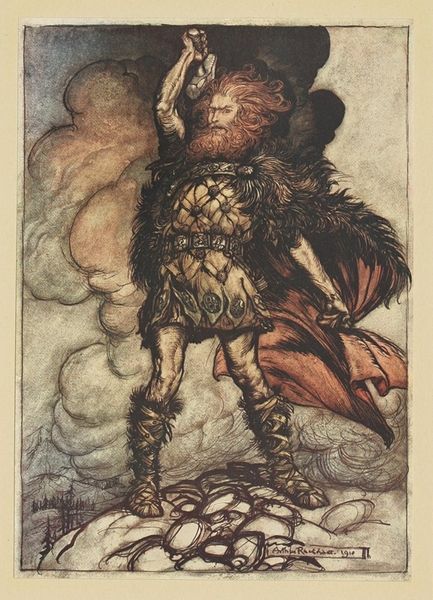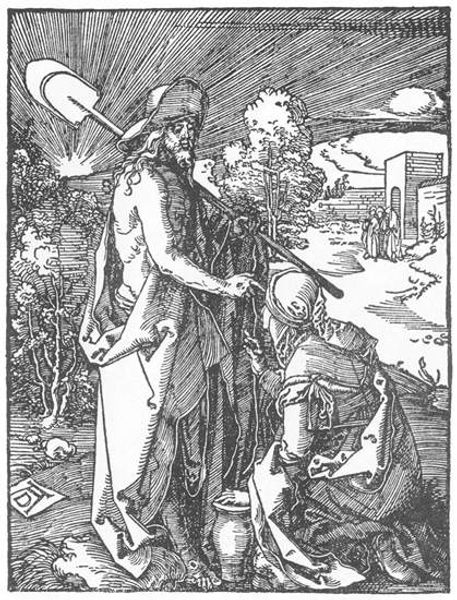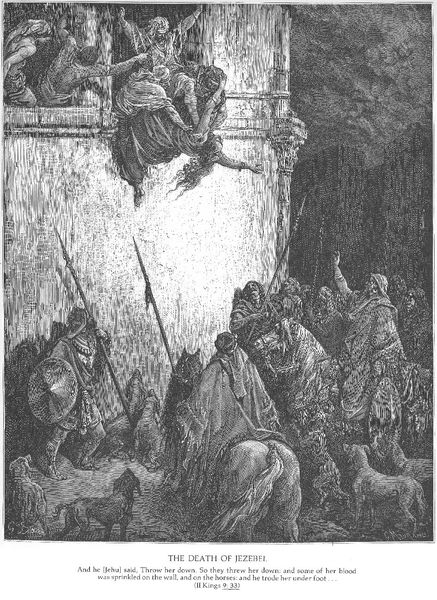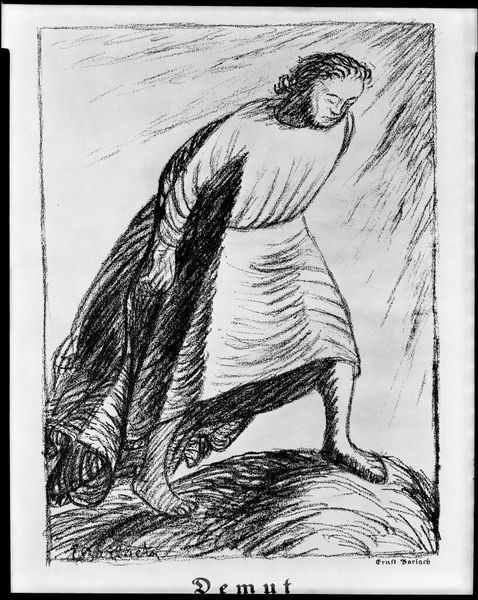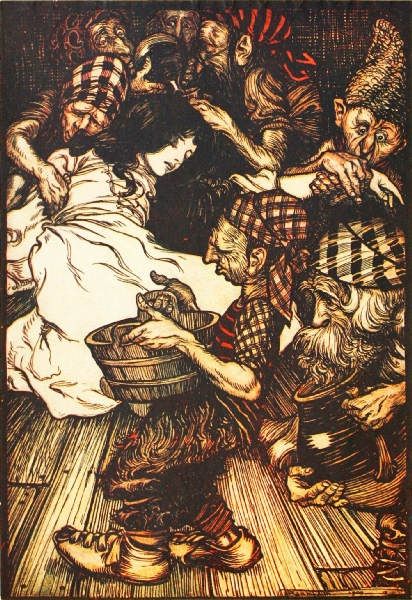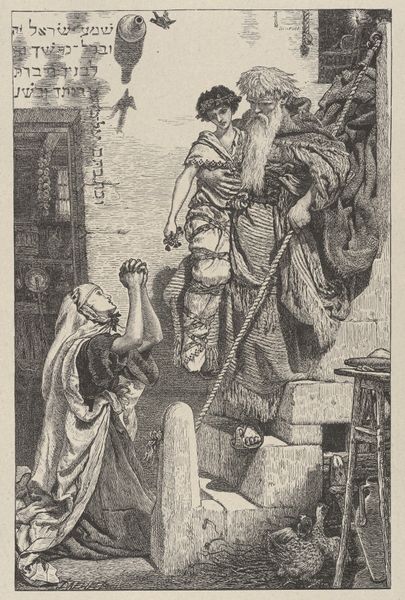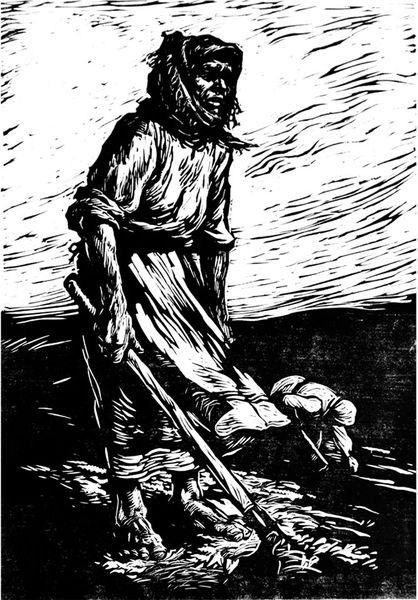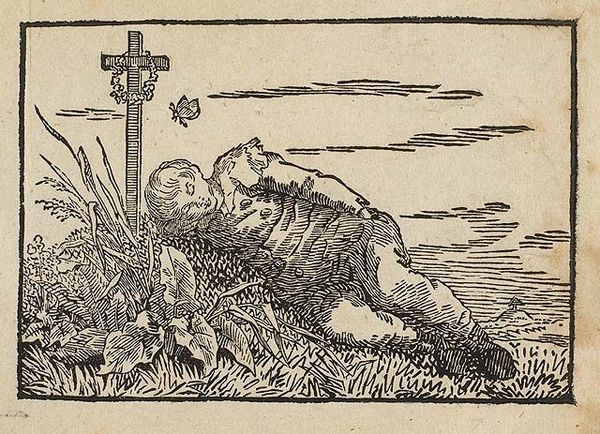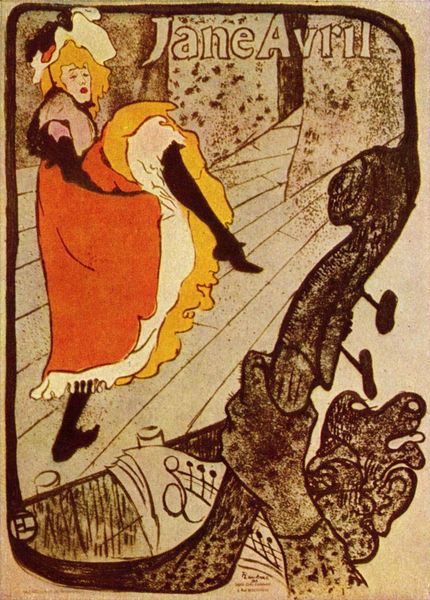
print, etching
#
allegory
# print
#
etching
#
figuration
#
surrealism
#
men
#
symbolism
#
history-painting
#
surrealist
#
early-renaissance
#
watercolor
#
monochrome
Dimensions: 32 x 24.5 cm
Copyright: Public domain US
Curator: Let's turn our attention to "Always Poor", a striking print executed in 1902 by František Kupka. It’s a powerful statement. Editor: It hits you immediately with a feeling of tension, doesn't it? The figures are dramatic, posed almost like actors on a stage. There’s a strange kind of illumination, too, that makes the whole scene feel both real and somehow...staged. Curator: Note the medium, an etching, which allows for those incredibly fine lines and dense crosshatching to build up the contrasts of light and shadow, contributing to that tension. And the social critique is palpable: the image presents a scene with a robed figure, a monk, positioned before a crowd. Below him are strewn items of wealth. Behind the crowd are industrial plumes of smoke Editor: The central symbolism is so direct, isn’t it? The Christ figure on the cross seems almost a prop overshadowed by the earthly power of the monk's gesture. And look at the faces in the crowd – a sea of upturned expressions, they become one entity under his control. It speaks volumes about societal power dynamics, doesn't it? Almost oppressive. Curator: Absolutely. It makes one think about the processes of exploitation disguised by rhetoric. Consider the early 20th-century context: rapid industrialization, increasing social disparities, the power structures that facilitate the economic suffering. It looks like an early renaissance composition; however the means of producing that renaissance have evolved! He employs symbolism to give us historical continuity of injustice. Editor: The industrial background contrasts strikingly with the monk’s plea. It’s almost a landscape of broken promises. The bundles and coins lying at the feet seem discarded, or inadequate offerings. A critique of the very idea of earthly wealth versus spiritual value, perhaps? Curator: Or a commentary on the exploitative systems wherein some amass fortunes while others remain destitute, regardless of faith. He uses very specific tools like printmaking and etching; this work makes an accessible statement about labor relations in a very physical sense! Editor: Considering it more deeply, "Always Poor" confronts the viewer with an uncomfortable question about faith and socioeconomic realities. Kupka’s image resonates with a timeless query about social responsibility. Curator: It is a complex statement, masterfully using its materiality to communicate that social stratification and historical struggle persist over time, making sure that poverty truly is always there.
Comments
No comments
Be the first to comment and join the conversation on the ultimate creative platform.
